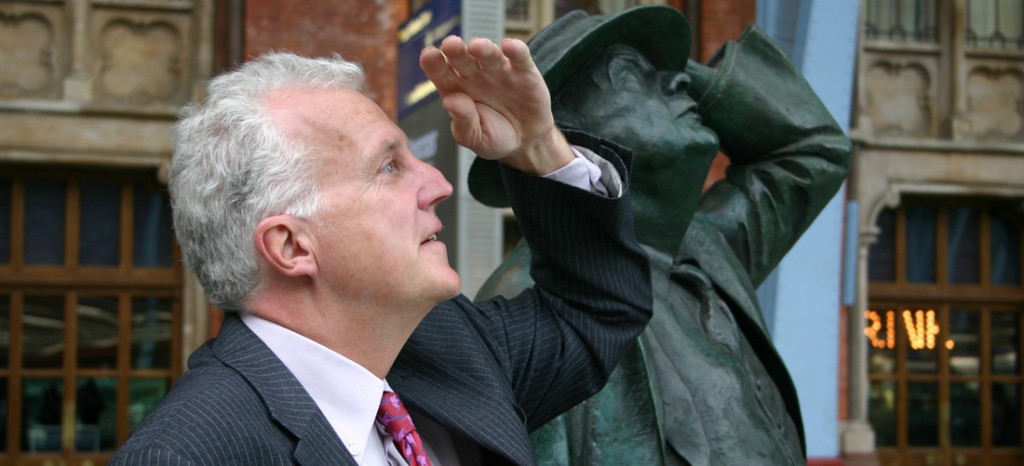After this week’s dreadful events at Heathrow, British Airways risks the same fate Marks & Spencers and losing its reputation as one of the great brands of British business. The beleaguered airline has made a catastrophic mistake at its peak time of the year by not ensuring it had enough staff to carry out the basic task of making sure its planes can fly. In getting the basics of its business so wrong, BA has made the same type of mistake that Marks made a couple of years ago when it failed to provide a decent clothes range for its core market of 35 to 55 year olds.
The immediate problem seems to have been that too many staff have gone off sick. Indeed, the company has an extraorinarily high rate of sickness, 17 days per year, a throwback to its days as a nationalised company. In fact, that is an indication of poor industrial relations, a legacy of the troubled 1990s when the company tried to shed staff too quickly and its chief executive, Bob Ayling, alienated the staff with his belligerent and confrontational approach.
This week’s debacle is the latest of a series of mishaps which started when Margaret Thatcher – who had privatised the airline in 1987 – took a strong dislike to the trendy ethnic designs for its tail fins, which BA then quickly removed, returning to a more traditional look. There were other errors too such as the failure to recognise that Richard Branson’s tiny Virgin operation was creaming off business class passengers with better service while Bob Ayling, gave the impression that he was not interested in economy class passengers. Then there was the curious episode of creating its own low cost rival, Go, and selling the subsidiary just as it was getting successful.
However, despite the embarrassing scenes at Heathrow during the last couple of days, BA has got quite a lot right in recent years. Its business class long haul service, Club World, is, according to Simon Calder, the veteran travel editor of The Independent, ‘world class in terms of comfort and food, only rivalled by Singapore Airlines and Virgin’.
On short haul, the company has responded pretty well to the fierce competition from the low cost airlines by cutting fares and making it easy to book through the internet. The lowest fares to European destinations are now generally less than half they were a decade ago. BA is currently advertising £69 flights to Milan, whereas it would have cost £200 then. Indeed, it is now occasionally cheaper to fly BA than on a low cost airline, and it certainly remains a nicer experience.
The trouble is that despite these successes, the odds are stacked against British Airways. It is lumbered with the huge cost structure of operating from the world’s most expensive airport, Heathrow, where the airline has to pay around £10 just to get a passenger on to the plane.
Moreover, everyone likes to knock the brand leader and BA has not been able to duck and dive like its smaller rivals. Its approach to PR has always been rather disdainful, as if to say ‘how dare anyone criticise the world’s favourite airline’. Which, of course, it is no longer as Lufthansa now flies more international passengers.
While the low cost carriers do not pretend to offer anything but a simple flight with £5 sandwiches and £1 50 cups of tea, BA has failed to manage expectations. Its advertising is largely aimed at business travellers but those in economy expect similar service. When they fail to get it, they realise that it is not worth paying the extra compared with the lower fares offered by the low cost carriers.
And poor BA faces more competition from the no frills rivals than any other major airline in the world. For many years, BA profited from the fact that Britain is an island and there is no way of getting off it apart from planes and ships. But that advantage was also spotted by the no-frills airlines which Britain is the main base for the two largest ones, Ryanair and easyJet. BA’s biggest problem is deciding how to respond to the continued growth of this new type of carrier. Take, for example, London Gatwick to Prague. There are soon to be four airlines on that route – BA, BMI, easyJet and Czech. Sure, a few people will want to pay £300 to travel in BA’s business class but most won’t. So how can BA survive in that market in the long term?
Indeed, the low cost airlines are picking up a lot of business travellers who have sampled their wares on their weekend trips to Umbria or the Dordogne and decided that they are not too bad. While low cost started out being used only by backpackers and those who could not afford more comfortable airlines, now everyone uses them, from the well-heeled to the stag nighters.After all, it is getting there that is the aim of flying, not the journey in between, a lesson that BA has not yet quite learned.
Perhaps the only way BA can save itself is by concentrating on the long haul which is still a lucrative business. Filling up the front of the aircraft on a trip to New York will basically pay all the costs of the fligths and then some, which means any money the airline gets from economy passengers is an extra. The demise of BA could, effectively, mean the return of BOAC. Now that would be a name to savour with.
